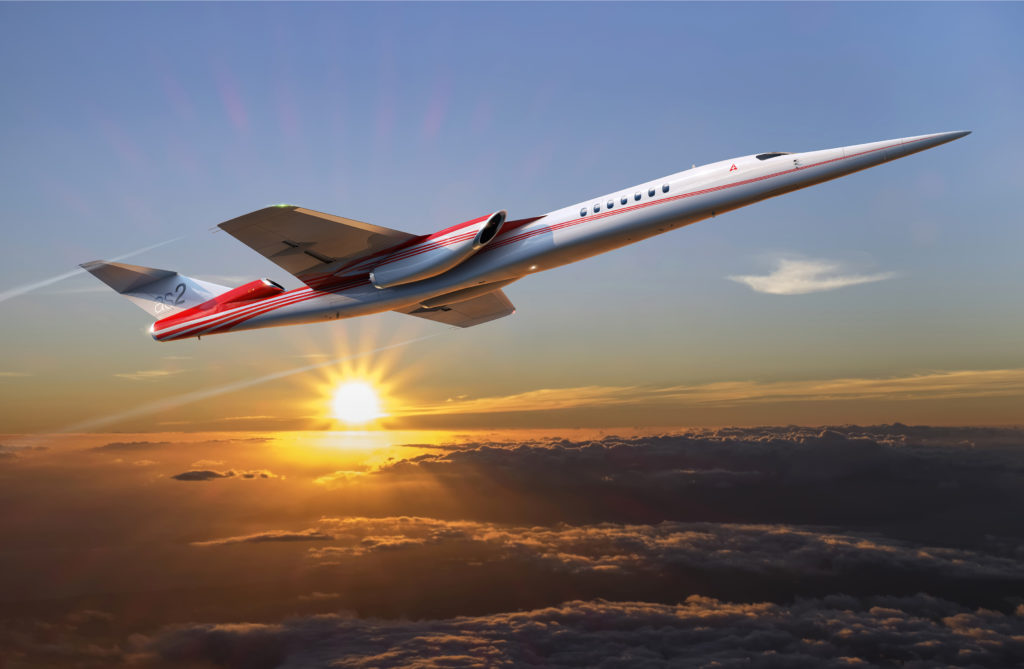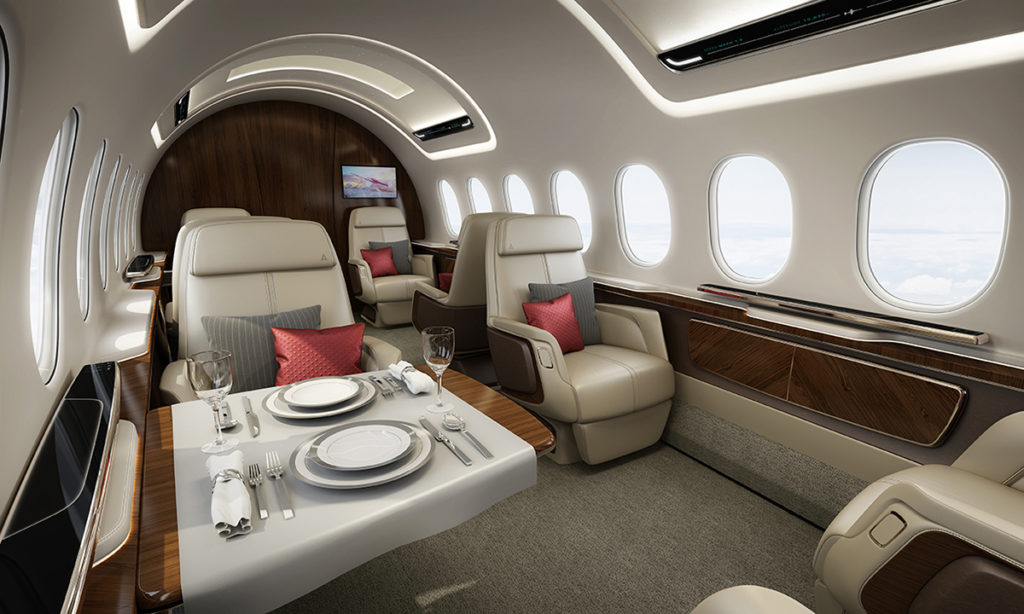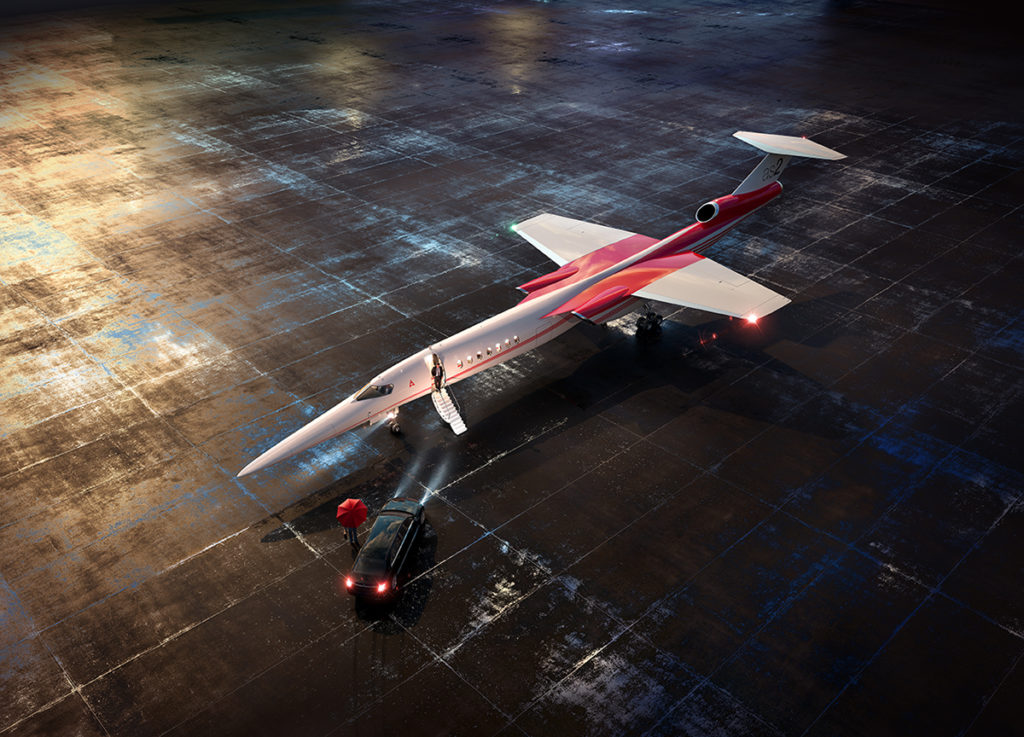Estimated reading time 6 minutes, 8 seconds.
Aerion has concluded the conceptual design phase for the AS2 supersonic business jet and has embarked on preliminary design, company CEO Tom Vice announced at the NBAA convention and exhibition in Orlando, Fla.
“We’re on track to fly in 2023,” said Vice.

The AS2 would be the world’s first supersonic business jet, and its planned crossing of the Atlantic in 2023 would be the first supersonic crossing since the Concorde’s retirement, he said.
“Aerion and our AS2 industry team, comprised of Lockheed Martin, GE Aviation, and Honeywell, have solved many of the tremendous challenges in creating a supersonic renaissance,” added Vice.
ENGINE
GE’s Affinity turbofan engine is slated to power the AS2, and would be the first supersonic engine purpose-built for business jets, the manufacturer said in a separate release.
Initial design of the engine is completed, and its development is timed to meet the Aerion AS2 launch.
The Affinity is a new class of medium bypass ratio engines that “provide exceptional and balanced performance across supersonic and subsonic flights,” said GE in a statement.
It is a twin-shaft, twin-fan turbofan controlled by a next generation full authority digital engine control (FADEC) for enhanced reliability and onboard diagnostics, the company said.
GE’s Affinity is designed to enable efficient supersonic flight over water and efficient subsonic flight over land, with a high-altitude ceiling of 60,000 feet (18,288 metres).
“In the last 50 years, business aircraft speeds have increased by less than 10 per cent,” said Brad Mottier, GE vice-president and general manager for business and general aviation and integrated services.

“Instead of going faster, cabins have increased in size and become more comfortable–and range has become longer. With large, comfortable cabin, long range aircraft in the marketplace, the next step is speed . . . made possible with GE’s Affinity.”
GE and Aerion launched a formal process in May 2017 to define and evaluate a final engine configuration for the AS2 supersonic business jet.
Teams from both companies continue to work in a “formal and gated process,” according to a release.
The next design review is targeted for 2020, and would signal the beginning of detailed design and test article production.
“Our mission is to enhance global mobility with supersonic speed, starting with business aviation, and following with successively faster and larger designs for business and commercial aviation,” said Vice.
“GE Aviation is making this new efficient, sustainable supersonic era possible through its pioneering work on the Affinity engine.”
COCKPIT
Honeywell is collaborating with Aerion to bring what Aerion calls a “revolutionary new cockpit” for the AS2 supersonic business jet.
“Honeywell will deliver a comprehensive connected aircraft solution that will enable operators to reach their destinations faster than ever before, maximizing their productivity while providing an exceptional travel experience,” said Carl Esposito, president, Electronic Solutions, at Honeywell.
“This is a fantastic opportunity to pioneer a new segment of aviation with Aerion.”

Honeywell Primus Epic avionics are standard equipment on some business and regional jet platforms, and in service on nearly 5,000 aircraft in 20 different models, according to a release. Primus Epic has accrued nearly 30 million total flight hours.
Most supersonic aircraft in the free world utilize various Honeywell avionics systems and components, the release said.
Honeywell’s mission processors, displays, sensors, radio altimeters, radar and flight control systems have also been used on thousands of supersonic military jets for decades.
“This unique combination of business jet and supersonic experience enables Honeywell to offer an innovative supersonic business jet cockpit for the AS2,” said Aerion in the release.
‘REVOLUTION’
Aerion’s stated mission is to deliver a revolution in global mobility.
“The AS2 is the first step on a roadmap to making supersonic travel efficient, sustainable, and widely available,” said Vice.
“Today we are at the limits of available technology. We are starting with a business jet because the technology closes and the business case closes–we see a viable market for the AS2. It will be our springboard to larger and faster designs, both for business aviation and commercial airliners.”
The AS2 is expected to fly at Mach 1.4, but a next generation beyond this aircraft, based on further adaptation of current engine technology, could push speeds to Mach 1.6 and allow for a larger cabin, said Vice.
“Entirely new engine designs hold the potential to build larger aircraft able to fly at Mach 1.8 and above,” he said.
“This evolution will require considerable investment in new technology and will arrive in stages over the next several decades, and Aerion intends to be at the forefront of these developments. If hypersonic passenger planes are flying at some point beyond that, we expect they will say Aerion on the side.
“For now, our focus will be on launching the supersonic revolution with the AS2, and we’re extremely pleased with our program relationships and our progress to date.”








